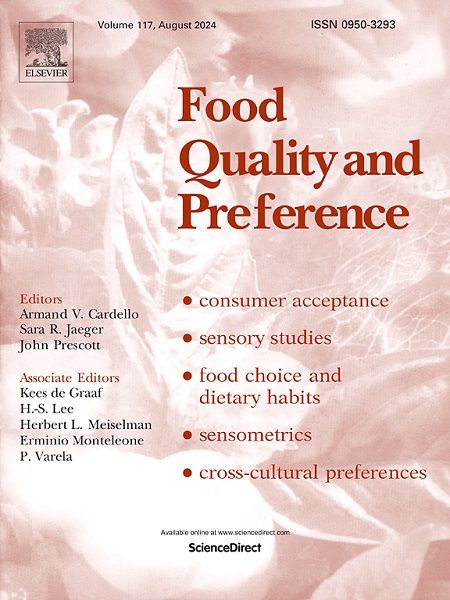感官和消费者研究的生成式人工智能框架
IF 4.9
1区 农林科学
Q1 FOOD SCIENCE & TECHNOLOGY
引用次数: 0
摘要
包括ChatGPT在内的生成式人工智能(GenAI)技术为感官和消费者科学提供了创新能力。最近在感官和消费者科学方面的实证研究强调了GenAI在人工智能生成的食物图像和食谱等方面的潜在效用。据我们所知,这是第一篇提出将GenAI整合到感官和消费者科学研究和开发中的综合框架的论文。该框架强调了如何通过迭代过程将GenAI应用于概念、设计和测试阶段。概念阶段利用GenAI产生研究概念(例如,提出研究问题和假设等想法)。设计阶段使用GenAI来制定研究设计。在此阶段,GenAI协助创建和验证调查/实验刺激和测量量表。测试阶段使用GenAI来评估研究想法和设计,方法是采用“硅样本”,即提高参与度和响应质量的交互式调查。在测试阶段,GenAI还可以分析非结构化文本数据,提供比传统方法更准确和可扩展的文本分析,甚至可以跨越不同的语言和文化。本研究还承认了潜在的缺陷,如人工智能输出中的偏见、数据隐私和安全问题、过度简化、缺乏透明度以及GenAI用户误解。这篇文章通过强调GenAI在感官和消费者科学界的潜力,同时解决其局限性并确保遵守高道德标准,鼓励GenAI的更大整合。本文章由计算机程序翻译,如有差异,请以英文原文为准。
Generative AI framework for sensory and consumer research
Generative artificial intelligence (GenAI) technologies, including ChatGPT, offer innovative capabilities in sensory and consumer science. Recent empirical studies in sensory and consumer science highlight the potential utility of GenAI in, for example, AI-generated food images and recipes. To the best of our knowledge, this is the first paper to propose a comprehensive framework for integrating GenAI into research and development in sensory and consumer science. The framework highlights how GenAI can be applied across the concept, design, and testing phases through an iterative process. The concept phase utilises GenAI to generate research concepts (e.g., proposing ideas such as research questions and hypotheses). The design phase employs GenAI to formulate research designs. During this stage, GenAI assists with creating and validating survey/experimental stimuli and measurement scales. The testing phase applies GenAI to evaluate research ideas and designs by employing “silicon samples,” interactive surveys that enhance engagement and response quality. In the testing phase, GenAI can also analyse unstructured text data, offering more accurate and scalable text analysis than traditional methods, even across diverse languages and cultures. This study also acknowledges potential pitfalls, such as biases in AI outputs, data privacy and security concerns, oversimplification, lack of transparency, and GenAI user misperception. This article encourages greater integration of GenAI by highlighting its potential for the sensory and consumer science community, while addressing its limitations and ensuring adherence to high ethical standards.
求助全文
通过发布文献求助,成功后即可免费获取论文全文。
去求助
来源期刊

Food Quality and Preference
工程技术-食品科技
CiteScore
10.40
自引率
15.10%
发文量
263
审稿时长
38 days
期刊介绍:
Food Quality and Preference is a journal devoted to sensory, consumer and behavioural research in food and non-food products. It publishes original research, critical reviews, and short communications in sensory and consumer science, and sensometrics. In addition, the journal publishes special invited issues on important timely topics and from relevant conferences. These are aimed at bridging the gap between research and application, bringing together authors and readers in consumer and market research, sensory science, sensometrics and sensory evaluation, nutrition and food choice, as well as food research, product development and sensory quality assurance. Submissions to Food Quality and Preference are limited to papers that include some form of human measurement; papers that are limited to physical/chemical measures or the routine application of sensory, consumer or econometric analysis will not be considered unless they specifically make a novel scientific contribution in line with the journal''s coverage as outlined below.
 求助内容:
求助内容: 应助结果提醒方式:
应助结果提醒方式:


